You’ve gotta wonder about the economic literacy of the Victorian Government.
After the ABS released the state accounts for the year ended June 2017 on Friday, Victoria’s Treasurer Tim Pallas, released the following baloney trumpeting the result:
Victoria’s economy leads the nation with gross state product for 2016-17 growing 3.3 per cent in real terms, the highest growth of all Australian states.
Victoria’s State Final Demand was the strongest in the nation at 3.9 per cent – a direct reflection of the power of Victoria’s booming economy, aided by the strong financial management and infrastructure pipeline of the Andrews Labor Government.
The above-trend growth in Victoria was broad based and driven by positive contributions from consumption, public demand, exports, and business and dwelling investment…
Victoria’s optimistic consumers were the main contributors to this growth, with household consumption again the strongest in Australia at nearly 3 per cent.
Can somebody please teach Ponzi Pallas some basic economics? Because if he had bothered to dig beneath the headline data, he would have discovered that there is little to celebrate if you are a Victorian.
In recent years, Victoria has easily led the nation in population growth, which is running at the highest level in Australia’s history:
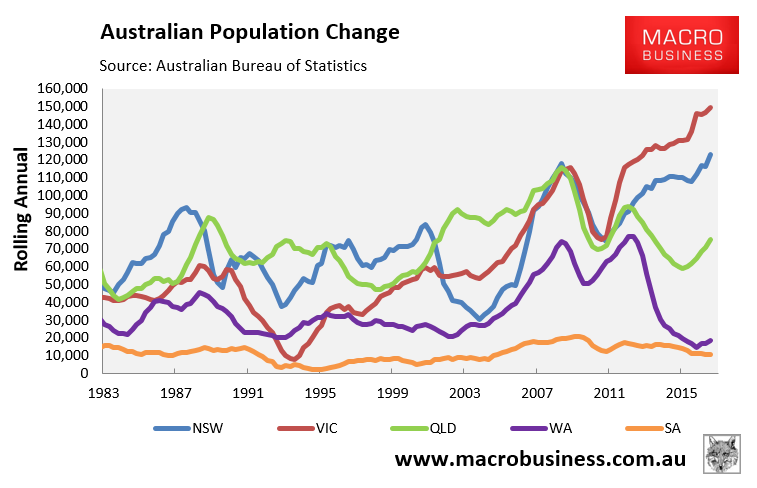
And in the decade to June 2016, Melbourne added an insane 960,000 people – easily the largest population increase out of Australia’s capital cities:
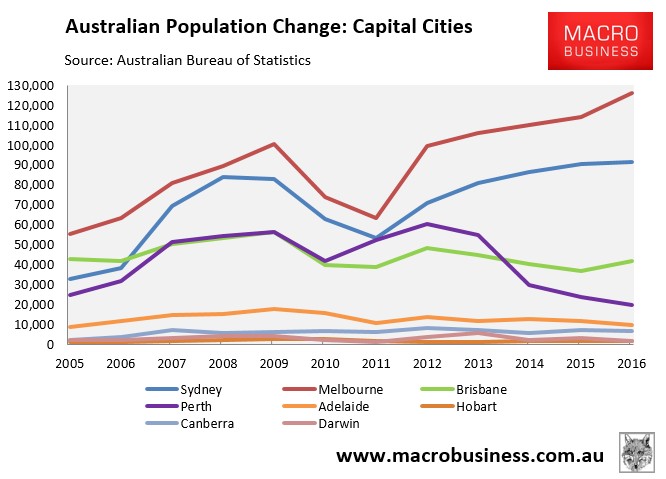
Moreover, official projections have Melbourne’s population increasing by around 1,850 people per week (97,000 people per year) for the next 35 years – a forecast that is likely to be revised upwards given the stronger than expected population growth to date!
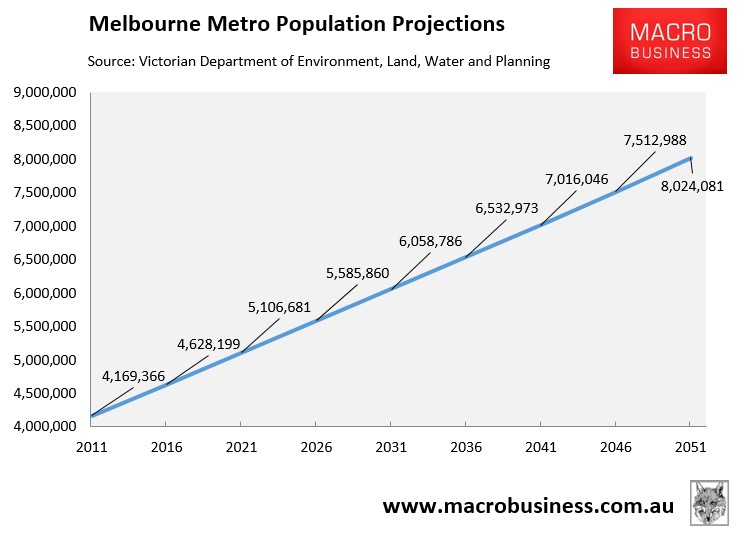
This rampant population growth has created all manner of problems for Melbournians, from worsening congestion to deteriorating housing affordability. Importantly, it has also masked the poor performance of the Victorian economy.
Once population growth is taken into account, Victoria’s real GSP grew by only 0.9% in the year to June 2017, albeit above the national average (0.4%):
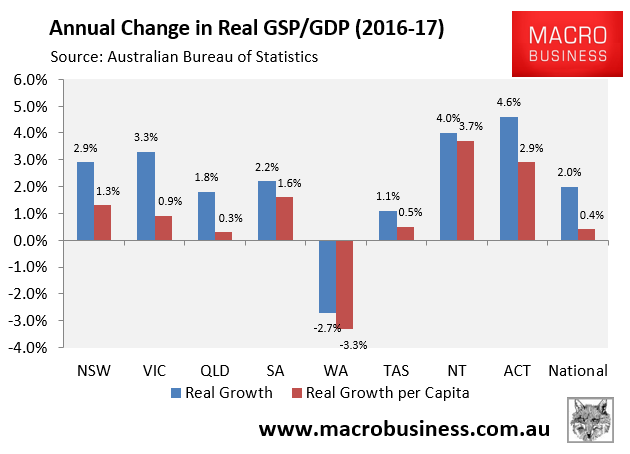
However, since the onset of the Global Financial Crisis (GFC) in 2008, per capita gross state product (GSP) in Victoria has risen by a pathetic 2.3%:
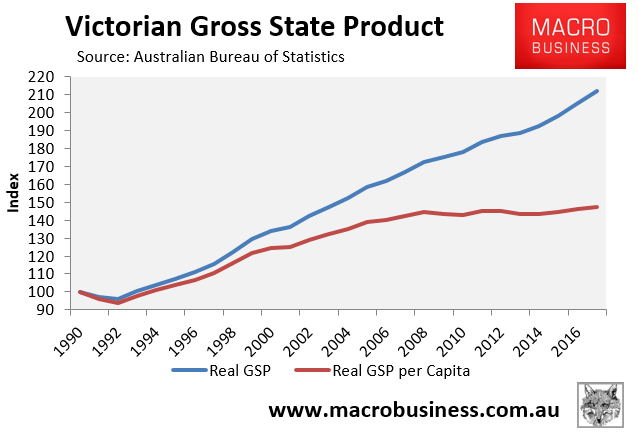
Worse, Victoria has experienced by far the lowest increase in per capita GSP in the nation since the GFC:
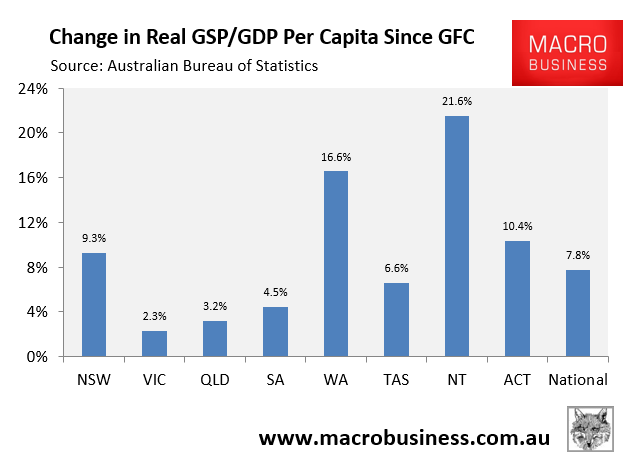
So what has been happening in Victoria is that the economic pie has grown due to population growth, but everyone’s slice of that pie has remained almost stagnant! Some economy, hey?
But wait, it gets even worse for Victorians. The growth in Real Gross State Income (GSI) per capita was the weakest in Victoria in 2016-17:
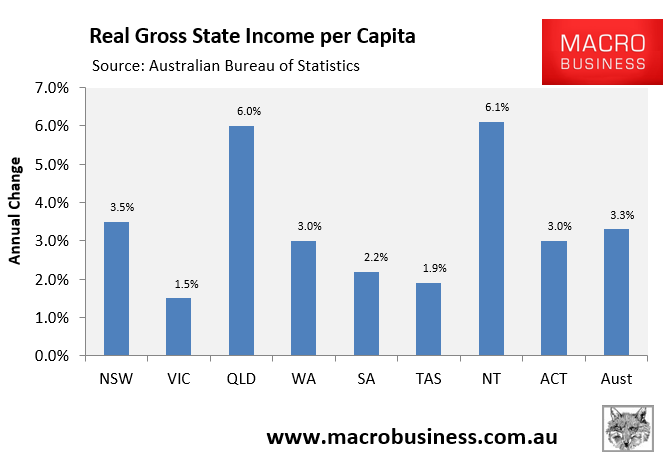
And also the weakest of all jurisdictions since the GFC:
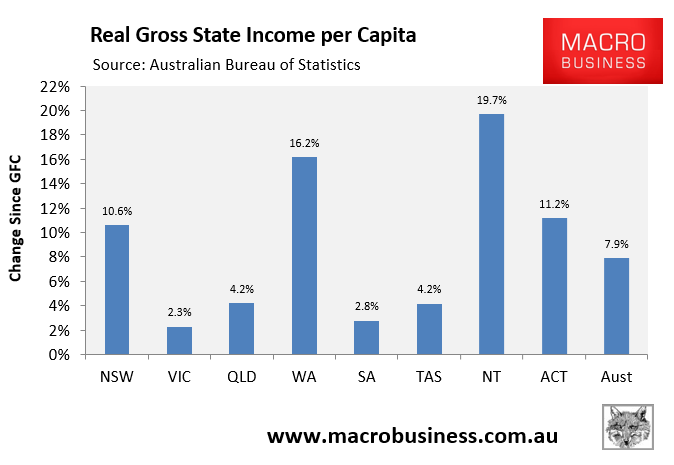
Moreover, because much of the income from production (GSP) goes to corporations or offshore, a far better measure of living standards is gross disposable household income per capita. Sadly for Victorians, they have the lowest per capita gross disposable income on the mainland, only beating out lowly Tasmania:
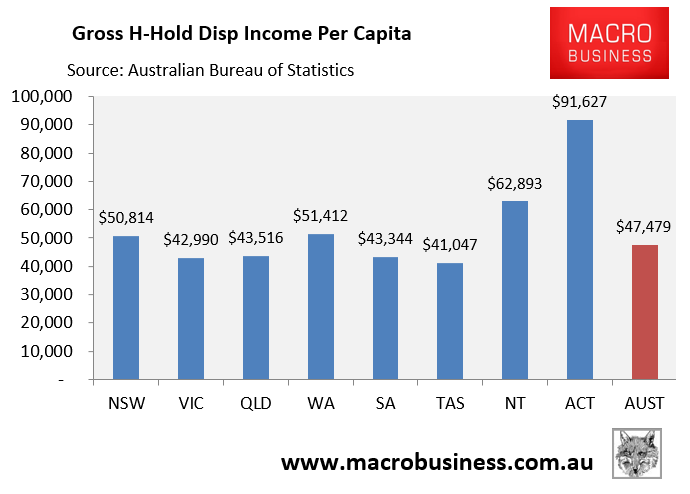
What should become abundantly clear is that Victoria is running a ponzi economy based on endless population growth (immigration), which in turn has juiced its services industries (think cafes, universities and financial services) and the housing construction industry (see next chart).
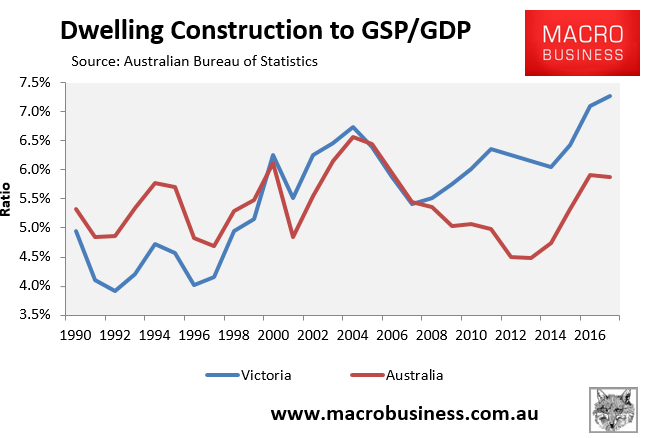
Meanwhile, Victorian business investment – the productive side of the economy – has flatlined in real terms since the GFC and fallen heavily as a share of the economy:
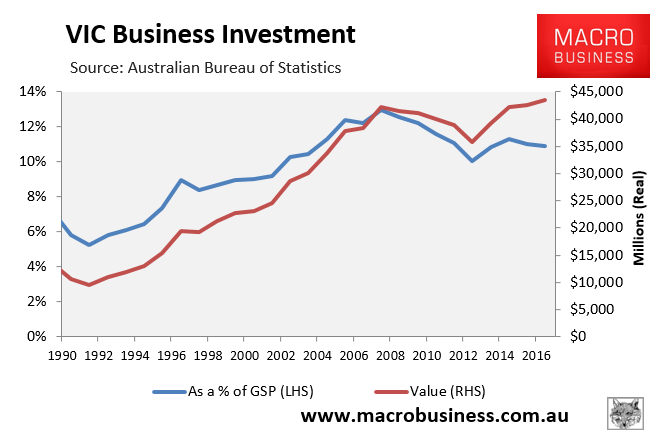
Victoria’s ponzi growth model is like a dog chasing its tail: as soon as the population growth stops, so does the growth in services/construction that it creates, raising a big question mark over the sustainability of the economy.
Further evidence of this false economy is found in Victoria’s trade performance. Exports have recorded slow growth over the past 15 years, whereas imports have more than doubled. Accordingly, the state’s trade deficit has blown out to a whopping $50.4 billion in the year to June 2017:
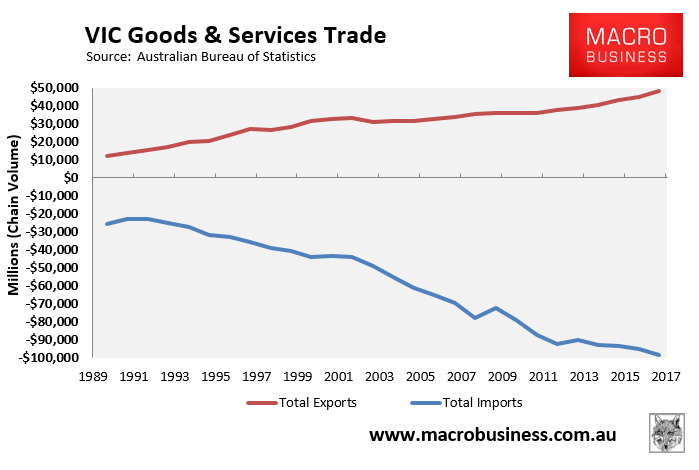
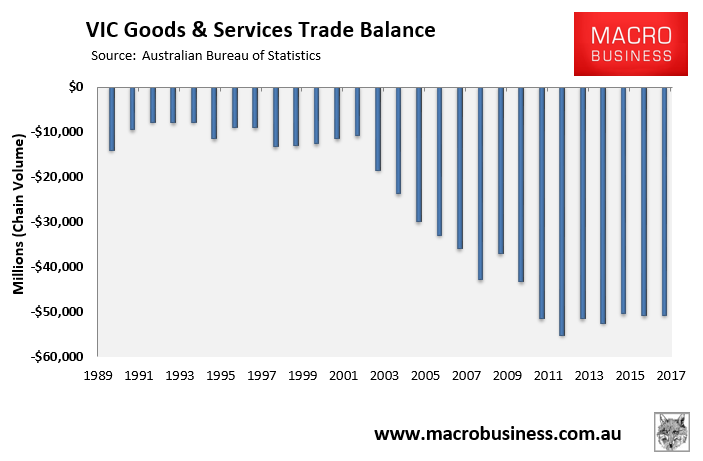
This data strongly suggests that Victoria (read Melbourne) is effectively sucking financial resources from the mining states in order to support its population ponzi.
To sum up, Victoria (read Melbourne) is operating a ponzi economy that is growing for growth’s sake via mass immigration and debt accumulation, in turn pushing against infrastructure bottlenecks and reducing the living standards of incumbent residents via rising congestion, reduced amenity, and deteriorating housing affordability.
How does the Victorian Government propose to create an economy that is based on real and sustainable growth, which actually improves the living standards of the incumbent population?

